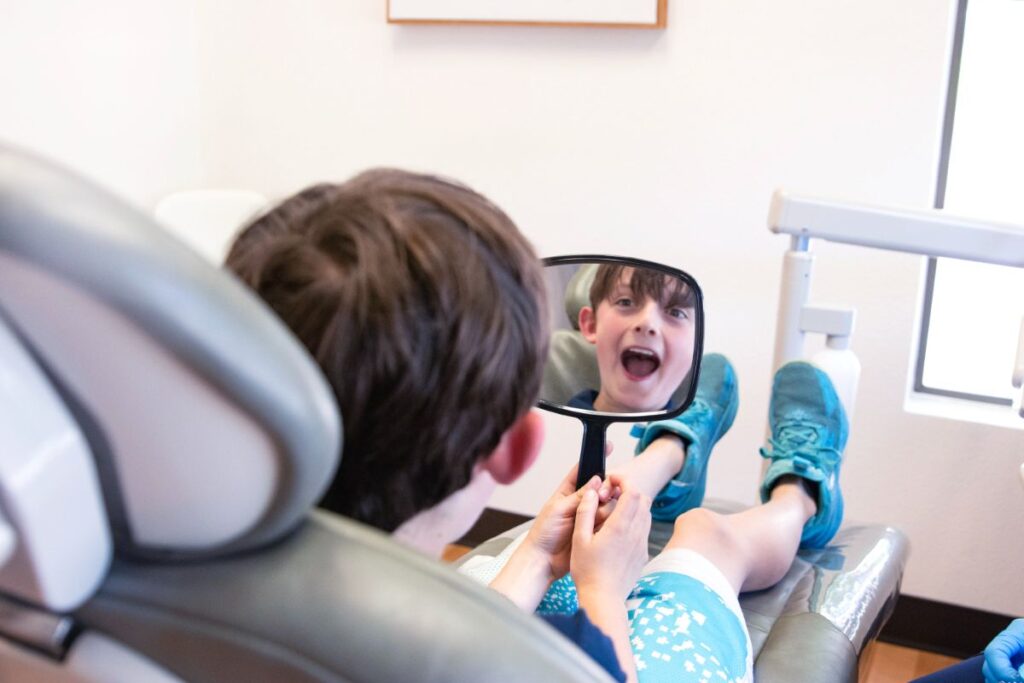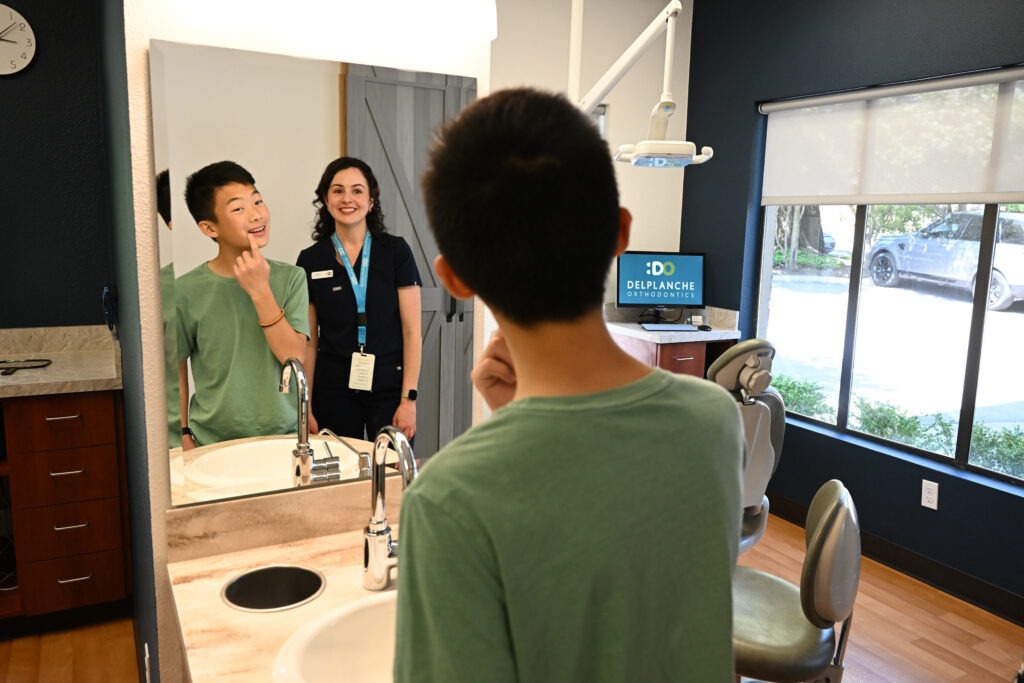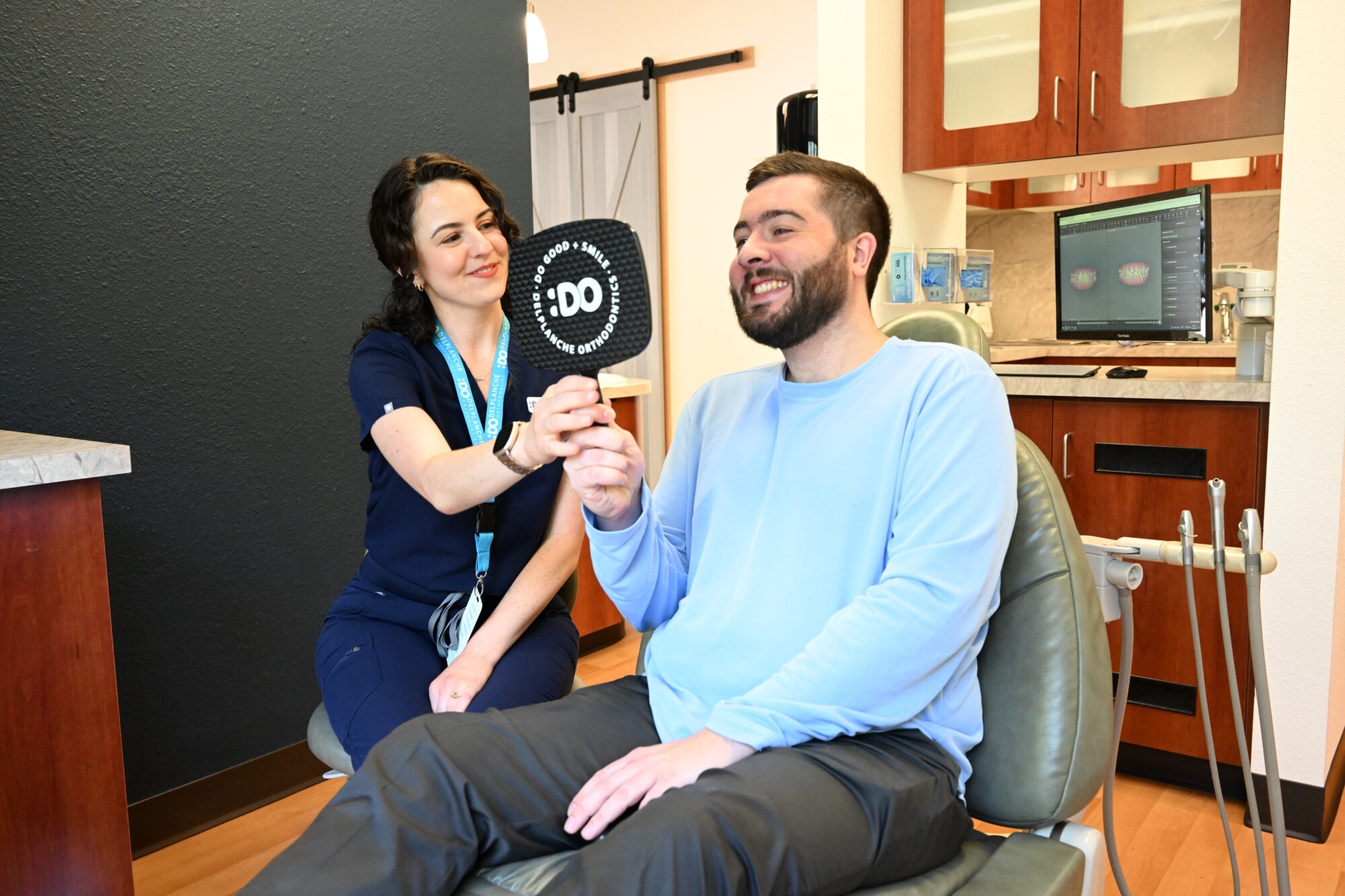Have you ever been curious about electronic toothbrushes? Are they worth all the hype they get? How can you know which is suitable with so many electronic and manual toothbrush options? Beaverton and Lake Oswego patients at Delplanche Orthodontics have asked these questions. Dr. Delplanche and the rest of our incredible team want you to have the info you need to make the best decision for you.
The Basics: Electronic Toothbrush vs. Manual Toothbrush
There are two leading players in the brushing world: electronic toothbrushes and manual toothbrushes. The manual toothbrush, a staple in homes worldwide, is a straightforward tool with bristles on a handle that requires motion and effort to clean teeth. On the other hand, electronic toothbrushes add a dash of technology to your brushing routine. These brushes are battery-operated or rechargeable, with bristles that rapidly oscillate (a fancy word for “spin”) or rotate to help break up plaque and clean your teeth.
The electronic toothbrush’s allure lies in its ease, especially for people with difficulty using a manual toothbrush effectively. However, the manual toothbrush’s simplicity and affordability have made it a timeless choice. Ultimately, the choice between manual and electronic often comes down to personal preference and needs.
Pros and Cons of Electronic and Manual Toothbrushes
Electronic toothbrushes offer several benefits. They often come with built-in timers to ensure you brush for the recommended two minutes, pressure sensors to prevent gum damage and bristles that move automatically. This helps facilitate efficient cleaning. Studies suggest electronic toothbrushes can reduce plaque and gingivitis more effectively than manual ones.
They are also an excellent choice for those with limited mobility, such as the elderly or people with physical disabilities. However, electronic toothbrushes are typically more expensive, require charging or battery replacements, and replacement toothbrush heads and can be less travel-friendly due to their size and power requirements.
Conversely, manual toothbrushes have been a reliable tool for centuries. They are affordable, widely available, and come in various styles, sizes, and bristle types to fit individual needs. They’re easy to travel with and don’t require any power source. However, they rely heavily on proper brushing techniques; no built-in timer ensures you’re brushing long enough. Also, people with limited mobility may need help to use manual toothbrushes effectively.

The Importance of Brushing Techniques
No matter what kind of toothbrush you choose, the technique you use to brush your teeth is paramount. Proper brushing technique is crucial in removing plaque, preventing tooth decay and gum disease. Brushing should last for at least two minutes twice a day. You should angle the toothbrush at 45 degrees to the gum line and use gentle, short strokes to clean all surfaces of the teeth — outer, inner, and chewing surfaces. Don’t forget to brush your tongue to remove bacteria and freshen your breath.
Regardless of the type of toothbrush, improper brushing—like brushing too hard—can lead to problems with gum recession and enamel wear. Your focus should always be on mastering the proper brushing technique. After all, the best toothbrush is the one that you use correctly and consistently. Whether manual or electronic, each toothbrush can be a powerful tool when used correctly.
How Electronic Toothbrushes Can Aid in Effective Brushing
Electronic toothbrushes can be valuable allies in maintaining optimal oral hygiene. They offer features that enhance your brushing routine and improve oral health.
Many electronic toothbrushes come equipped with timers that ensure you brush for the recommended two minutes. This feature is especially beneficial because studies show that most people brush for a shorter time (too short, in fact) when using a manual toothbrush. By using an electronic toothbrush with a built-in timer, you can be confident that you are dedicating sufficient time to clean your teeth thoroughly.
One of the key advantages of electronic toothbrushes is their ability to provide a more dynamic cleaning action. The oscillating or rotating bristles mimic the motion of professional dental cleaning tools, helping to dislodge plaque and food particles more effectively. The rapid bristle movements create micro-movements that can access hard-to-reach areas and remove plaque from the gumline.
Many manufacturers equip high-quality electronic toothbrushes with pressure sensors. They alert you if you are applying too much pressure while brushing. Too much pressure can lead to gum recession and enamel damage (ick!). Using an electronic toothbrush with a pressure sensor ensures you use the right amount of pressure for gentle and effective cleaning.
Some advanced electronic toothbrushes offer different brushing modes to cater to individual needs. These modes can include options such as a sensitive mode for those with sensitive teeth or gums, a whitening mode for removing surface stains, or a gum care mode for massaging and stimulating the gums. Access to different modes allows you to customize your brushing experience and address specific oral health concerns.
It’s important to note that while electronic toothbrushes offer these advantages, they should not replace proper brushing techniques. Even with an electronic toothbrush, it’s essential to use gentle, circular motions and cover all surfaces of your teeth. The technology of an electronic toothbrush is designed to enhance your technique, not replace it.
Incorporating an electronic toothbrush into your oral care routine and mastering proper brushing techniques can optimize your oral health and achieve a healthier smile. Remember to consult Dr. Delplanche for personalized recommendations based on your dental needs and oral health goals.

Optimum Brushing At Delplanche Orthodontics
We hope that answers a few questions about electronic and manual toothbrushes. But if you’re local to Lake Oswego or Beaverton and still have questions, we’d love to hear from you! Delplanche Orthodontics can help you find the “tooth” behind any orthodontic problem. Visit us here to schedule a free consultation. Dr. Delplanche can’t wait to meet you.
